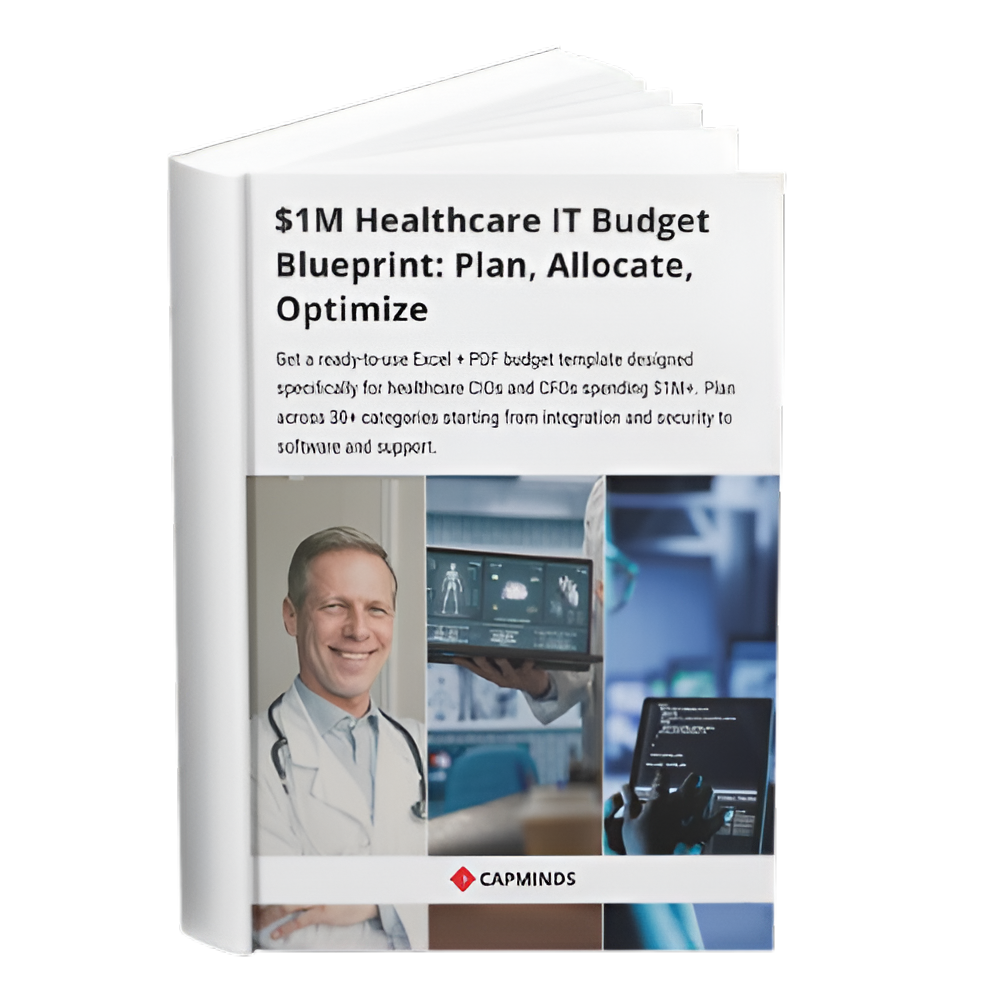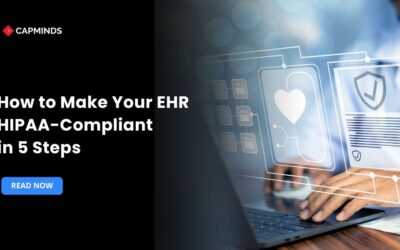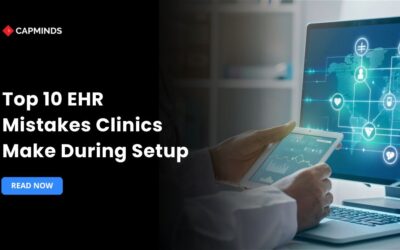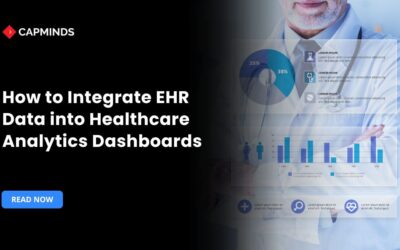The Complete Guide to a Successful New EHR Rollout: Best Practices for 2025
Electronic health records now serve as the foundation of modern healthcare. By 2024, approximately 75% of office-based practitioners and 96% of hospitals in the United States will have deployed authorized EHR systems. Currently, adoption is essential. At the time, this is the industry standard.
The global market clearly demonstrates this momentum. Analysts predict that revenues will climb from $28.6 billion in 2024 to $30.1 billion in 2025. This expansion represents a consistent compound annual growth rate of nearly 5.4%. Regulations are also affecting the terrain.
The Trusted Exchange Framework and Common Agreement were formally included in the Office of the National Coordinator’s rule, which was finalized in January 2025. This measure strengthened national data exchange restrictions and established specific criteria for Qualified Health Information Networks.
Similarly, interoperability standards such as FHIR are being developed. AI-assisted charting, remote patient monitoring technologies, and telehealth modules are already available on modern EHR platforms. These advancements are causing healthcare institutions to rethink outdated processes. While some invest in a new installation, many replace legacy platforms.
This blog shares the most recent 2025 industry guidelines with time-tested best practices from clinical informatics research. The goal is to provide a clear, detailed plan for successfully implementing a new EHR system.
1. Plan & prepare: Set goals and assemble the right team
Define strategic objectives
Determine the purpose of your new EHR installation before making any purchases.
Goals could include improving analytics, increasing patient throughput, qualifying for reimbursement programs, or automating procedures to save money. Setting defined, quantifiable objectives allows you to select an EHR with the necessary functionality and then evaluate performance.
Assemble a cross‑functional team
It takes more than one person to administer an EHR, including a project manager, dedicated IT specialists, representatives from the billing and administrative departments, and doctors familiar with current processes. Assign roles clearly, engage outside consultants when needed, and ensure internal stakeholders collaborate.
Establish a budget and timeline
Create a reasonable budget that includes data migration, software licensing, hardware updates, training, and ongoing support.
Estimates usually change as research begins; after needs and vendor quotes are established, they can be modified. Create a timeline for post-go-live support, testing, training, planning, and migration.
Define requirements and evaluate vendors
Collect needs from several departments, including hardware, network capacity, user roles, process requirements, and regulatory compliance.
The criteria for 2025 should include FHIR-based interoperability, TEFCA compliance, AI-enhanced charting, telehealth capabilities, and remote patient monitoring integration.
When assessing multiple systems, take into account functionality, usability, scalability, security, and price before deciding on a single vendor. Ensure that the supplier provides comprehensive training and ongoing support.
2. Plan data migration & testing
Inventory and map data
Determine which administrative and clinical data need to be relocated. Doctors frequently digitize important patient records, but older paperwork is still preserved on paper.
List the data sources, evaluate their quality, and then map the fields to the new EHR. This phase helps to eliminate gaps and ensures that patient histories are appropriately documented in the new system.
Develop a migration strategy and schedule
Data migration is a vital phase. Hire a migration professional and plan the loading, extraction, cleaning, and transformation. Test migrations can be used to ensure data integrity and detect problems early. The PNAS guideline table emphasizes human availability, technical infrastructure, and planning for contingencies.
Testing and involving super‑users
Extensive testing ensures that the EHR meets the standards and performs as expected. Developers should debug the system first. Clinicians who will use the system daily, known as super-users, should test workflows using real-world data and provide feedback. Their cooperation ensures that the technology discovers usability issues and is compatible with clinical workflows.
Plan for cybersecurity and privacy
Data breaches are more common when new EHRs are installed. Choose vendors with solid security protocols, including encryption, audit logging, and role-based access controls.
Organizations should keep their breach response methods up to date, and employees should get cybersecurity hygiene training. The 2025 recommendations place a high emphasis on behavioral analytics and multi-factor authentication to detect suspicious activity.
Related: What Should Be in Your 2025 Health IT Security Audit Checklist
3. Invest in comprehensive training & change management
Start training early and use multiple modalities
Impact Advisors recommend commencing training five to six months before go-live, with end users following super users.
Workflow-based and role-specific training should include classroom lectures, online courses, role-playing, and hands-on experience. To ensure that all users are competent, numerous organizations adopt a “no training, no access” policy.
Leverage super‑users as peer trainers
Super-users are effective peer trainers because they have a thorough comprehension of the system. Encourage them to lead sessions, reply to inquiries, and provide immediate support during the go-live period.
Communicate continuously and manage change fatigue
Rigid schedules and inadequate change management are frequent obstacles. Set reasonable expectations, emphasize the advantages, and give frequent updates.
Focuses on communicating change as a continuous process, designing with clinicians rather than for them, and emphasizing human-centered design and communication.
Plan for ongoing training
Plan training for new employees, refresher classes, and feature updates following the launch. Provide “in-the-moment” assistance by making digital adoption tools available.
4. Execute go‑live thoughtfully
Choose a rollout approach
Some firms want a “big-bang” go-live, while others prefer a staggered deployment. Each strategy has merits and downsides. While an all-at-once method can accelerate the transition, it requires substantial preparation and support. A phased rollout can reduce risk by limiting the initial user base.
Provide intensive support during go‑live
Anticipate an increase in effort and stress; ensure that IT personnel and superusers are available in person or remotely to troubleshoot issues.
Monitoring financial performance during go-live, error rates, and patient throughput, among other metrics. Monitor system speed, error rates, usability, and uptime to detect problems early.
Monitor patient and clinician satisfaction
Use focus groups, surveys, or one-on-one interviews to gather feedback. Respond to issues as soon as possible to maintain trust and reduce care disruption.
Prepare for additional staffing or schedule changes in anticipation of the risk that transitions will temporarily reduce clinical productivity and patient satisfaction.
Related: EHR in 90 Days: Accelerating Digital Transformation in Healthcare
5. Continuously evaluate, optimise, and innovate
Track performance metrics and adjust workflows
Use analytics to assess system performance and process outcomes after go-live. Workflows should be adjusted to reduce clicks and align EHR procedures with clinician practices. To identify adoption gaps, observe behavior as well as task completion.
Foster a feedback loop
Create opportunities for administrative and clinical staff to make suggestions for improvements. To uncover common pain points, use digital adoption platforms or surveys. Taking control of decisions and demonstrating value: appoint governance to decide which improvements to execute and measure their impact.
Optimise and customise over time
Implementing an EHR is a journey, not a project. Keep updating your system as new technologies and laws emerge. Maintain security and compliance by regularly reviewing third-party modules and system changes to meet changing needs. Data analytics can help you evaluate your training needs and support targets.
Feature trends and considerations for 2025
When evaluating EHR platforms in 2025, consider these emerging features and regulatory drivers:
| Trend/Requirement | 2025 context and implications |
| AI‑powered documentation & clinical decision support | AI systems that listen to clinician-patient talks, create notes, identify possible problems, and offer evidence-based recommendations are all included into modern EHRs. AI increases decision accuracy and expedites documentation, but it also necessitates strong governance and bias reduction. |
| Telehealth & remote patient monitoring integration | Clinicians may check records, make video visits, and document with ease thanks to built-in telemedicine tools. Vital sign data is fed into the EHR by remote patient monitoring devices to initiate alerts and guide care. |
| Interoperability through FHIR and TEFCA | Data transfer between EHRs, labs, pharmacies, and third-party apps is made possible by FHIR APIs. By establishing national guidelines for Qualified Health Information Networks, TEFCA standards facilitate reliable data transfer. Better care coordination, less duplicate testing, and patient-controlled data access are all made possible by improved interoperability. |
| Enhanced user experience & voice interfaces | User-friendly interfaces, role-based dashboards, and flexible architectures will be given top priority in systems by 2025. Doctors save time by typing less thanks to voice recognition and AI-powered recommendations. |
| Advanced security & compliance | EHRs are increasingly utilizing multi-factor authentication, robust encryption, behavioral analytics to identify anomalies, and even blockchain for tamper-proof audit trails in response to the growing threat of cyberattacks. Regular audits, training, and incident response planning are necessary to guarantee adherence to the constantly evolving HIPAA, HITECH, and ONC regulations. |
| Cloud‑based, scalable architectures | Because of their lower beginning costs and ease of scaling across sites, cloud-based, subscription-based EHRs are expanding more quickly than on-premise systems. Despite the fact that cloud services make remote work and healthcare easier, federal agencies are required to adhere to FedRAMP and do thorough vendor screening. |
Governance, human‑centred design & change communication
Successful EHR deployments recognize that technology cannot improve healthcare operations on its own. Building technology with end users in mind, not for them, and addressing the right issues.
Teams should involve physicians in design decisions, address the underlying causes of workflow issues, and integrate technical options with strategic goals. Clear decision-making authority and a method for monitoring the value of each change are essential components of good governance. Communicate changes proactively and consistently; clinicians will be more likely to adopt the new system if they feel informed and supported.
CapMinds Digital Health Tech Services for a Seamless EHR Rollout
At CapMinds, we understand that a successful EHR rollout is not just about software, it’s about creating a connected, secure, and efficient healthcare ecosystem.
Our complete Digital Health Tech Services empower hospitals, clinics, and practices to implement, optimize, and future-proof their EHR systems with confidence.
With CapMinds, you gain access to:
- EHR Implementation & Customization – Tailored to your specialty workflows and compliance needs.
- Data Migration & Interoperability – Secure, accurate, and TEFCA/FHIR-ready.
- Training & Adoption Programs – Building clinician confidence and minimizing disruption.
- Security & Compliance Services – HIPAA, HITECH, and ONC-aligned safeguards.
- Ongoing Support & Optimization – Continuous improvement for long-term success.
Whether you are planning a new rollout or replacing a legacy system, CapMinds delivers technology and expertise that accelerate go-live, reduce costs, and improve outcomes.
Schedule your free consultation and take the first step toward a smarter healthcare future.




